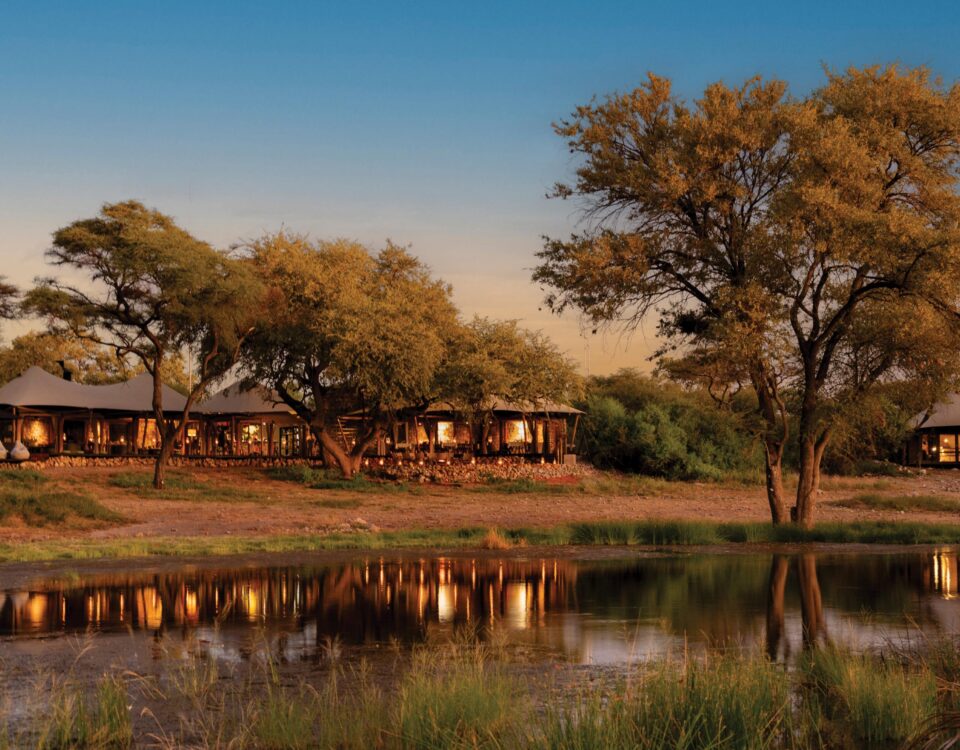Cold fronts snapping at heels of summer
April 19, 2013Namibia Tourist guide Kurt’s tips for travellers
April 20, 2013Birding news – Read about the bird that made it’s way to Camp Chobe and made the birders go wild with excitement…
Sprawled along the banks of the Chobe River, the Camp Chobe lodge flawlessly combines the best of this unique inland flood plain – the peace and serenity of gliding through waterways lined with lush aquatic plants, and spotting big game and countless birds in endless miles of green grassland.
Situated a mere 4 km from the Ngoma border post between Botswana and Namibia, across the river from the world-renowned Chobe National Park, the surroundings are home to one of the largest concentrations of elephant on the African continent.
The Chobe National Park, extending over some 11 700 km² in the far northern reaches of Botswana and bordering on the Chobe River, allows game to roam freely. The area is particularly well known for its large herds of elephant and buffalo, and for the two aquatic antelope that are encountered nowhere else in Botswana – the puku and the Chobe bushbuck.
Covering approximately a third of East Caprivi, the Zambezi and Chobe flood plains combine permanent waterways with drier areas. While some parts of the Chobe National Park remain permanently flooded, others experience high-water levels only from May to September, when rainwater from Zambia flows into the Zambezi and Chobe rivers.
Being located on these plains with their dense mopane woodlands and flood plains featuring majestic boabab trees, enables Camp Chobe to provide visitors with one of Africa’s most scenic wilderness experiences. Permanently swampy areas are lush and green, while seasonal swamplands contain a network of small channels incising their way through papyrus and reed beds to create islands of many shapes and sizes.
ACCOMMODATION
Gaze out over the flood plains from the elevated deck of the main building strategically placed at the river’s edge, or from the comfort of the private lounge decks.
Delicious meals are served in the dining room with its sweeping riverine views, or guests can enjoy a braai around a crackling fire in the boma.
Designed with privacy in mind, Camp Chobe enjoys luxurious solitude on the banks of the Chobe River. All 14 light and airy tented chalets, combining canvas and indigenous mopane timber, ensure spectacular views. The deck and indoor en-suite bathroom offer views onto the river. At night the noise of the wild filters through the canvas walls of your suite.
Another option is to camp at the carefully positioned sites positioned at the water’s edge. The huge trees in the campsite create shady spaces where you can relax during the heat of the day.
ACTIVITIES
The main activities at Camp Chobe are high-water boat cruises from February to August and game-viewing drives in the dry season from September to January.
With no boundary fences between the Chobe National Park and the Caprivi flood plains, the richly varied habitats make this the ideal place for bird watching. The surroundings harbour an abundance of over 400 species. Looking out for typical savannah game animals, while enjoying a leisurely cruise along riverine lagoons and channels, is another experience to savour. The area is also well known for sustaining significant populations of the endangered African wild dog, which is regularly sighted close to the river.
The burgeoning elephant population has been responsible for removing much of the riverine forest, opening up this habitat for other herbivores and carnivores. Watching the elephant families drink and bathe in the river is an unforgettable experience, all the more impressive when herds of buffalo, rafts of hippo and gigantic Nile crocodiles are part of the scene. Lion and spotted hyaena are frequently seen on the flood plains, where red lechwe, puku, zebra, sable and roan come out to graze.
Game viewing is optimal when done from a canoe. Accordingly, mukoro and Canadian canoe trips are offered all year round.
Eco-friendly
Both Camp Kwando and Camp Chobe are managed along eco-friendly lines, among others providing solar heating for the showers and lighting.
Contact
Johan Liebenberg
Cell: +264 81 124 5177
For more accommodation choices see Camp Kwando







1 Comment
Oh Johan
Thank you I have seen your marketing strategy from travel news volume 18, its interesting, keep it up again & again.
yours Partner, Raymond